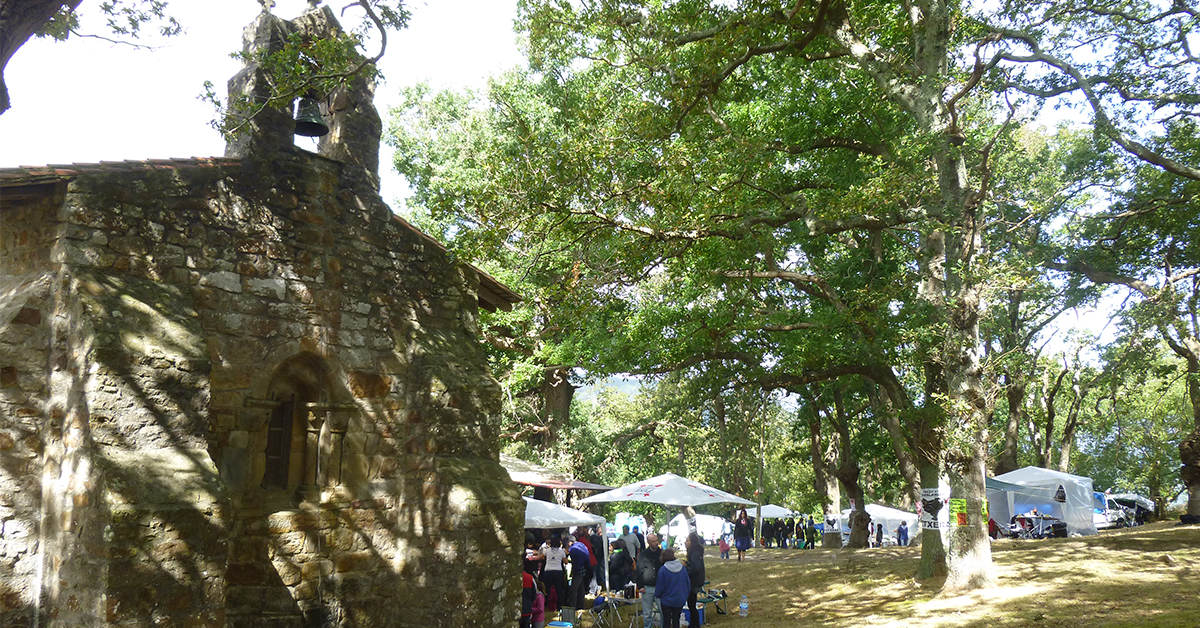Archives
Hidden on one of the hills that span the eastern slopes of Mount Jata, the chapel of St. Michael of Zumetzaga stands in an isolated and mysterious setting. Ancient oaks, chestnut trees and the odd age-old holm oak provide the shade protecting this simple, but historically important chapel; it is believed to date back to the end of the 12th century and is in the late Romanesque style. The Zumetzaga farmstead, the guardian of this gem, can be found beside it.
The chapel faces east and is a modest building, consisting of a single rectangular nave, ending in a almost square apse. This is shored up by sturdy buttresses outside that give a peculiar look to the building. All the walls, along with the vaults, are in stone masonry and there is only an opening on each façade. Three of them are entrances, and there is a small window in the chevet which lets in the little light to the dimly lit chapel. That, and the south-facing door, are the most interesting features of the building. (more…)
Summer is prime time for the celebration of patron saint festivities, along with local festivals in neighbourhoods and at hermitages. In the old days, and until just a few decades ago, such events would be customarily organized by informal groups of youth.
As a matter of fact, we would like to take this opportunity to recall a tradition, once common in many localities of Bizkaia but which disappeared during the civil war: namely, that of the so-called zaragi-mutilak ‘lads of the wineskin’. Indeed, a group of youth, known as eskota in the region of Uribealdea, would share the cost of a full wineskin for drinking and feasting. Most notably observed in the municipality of Mungia, particularly in the neighbourhoods of Atxuri, Belako, Billela, Elgezabal, Iturribaltzaga, Laukariz, Markaida and Trobika, the custom persisted until the mid-20th century. Practically lost today, barely survives, being partly maintained, only in the neighbourhoods of Atxuri and Trobika. (more…)




